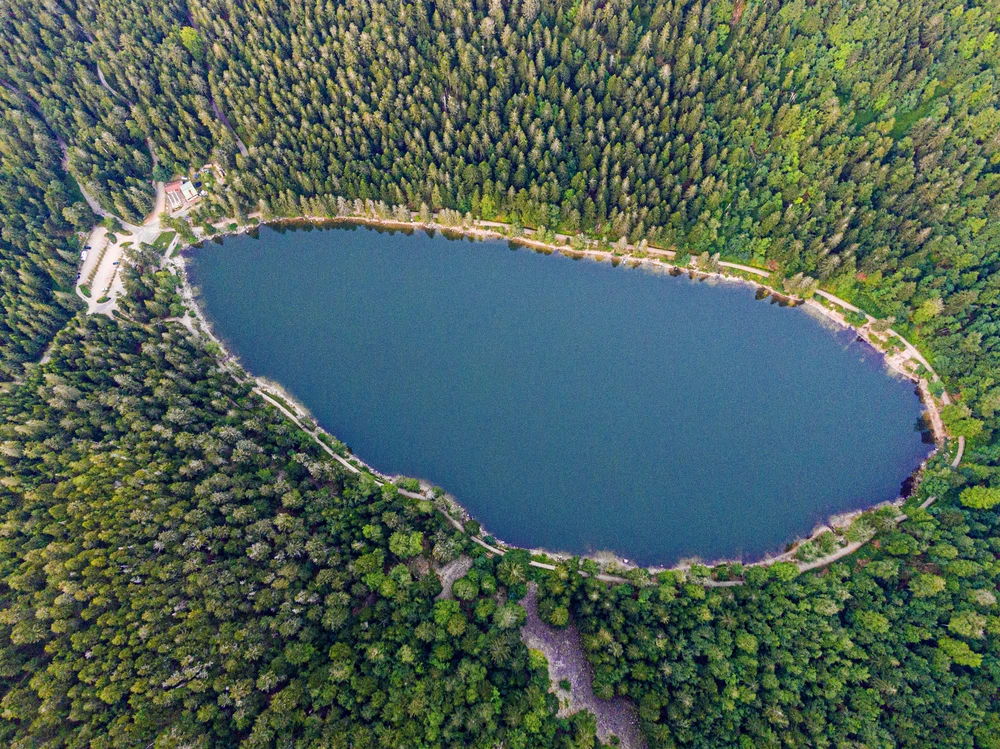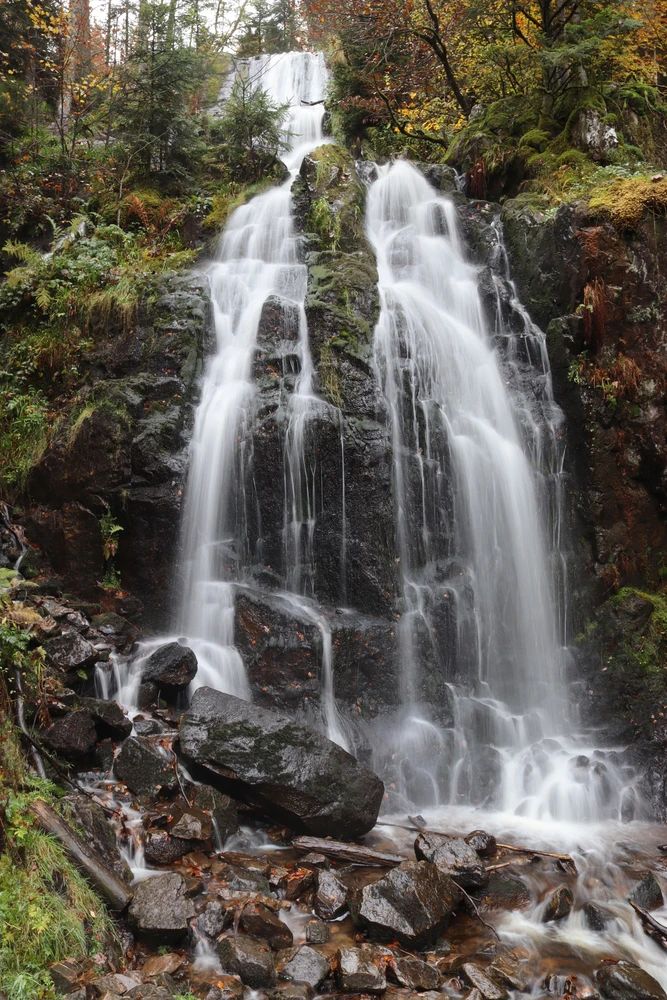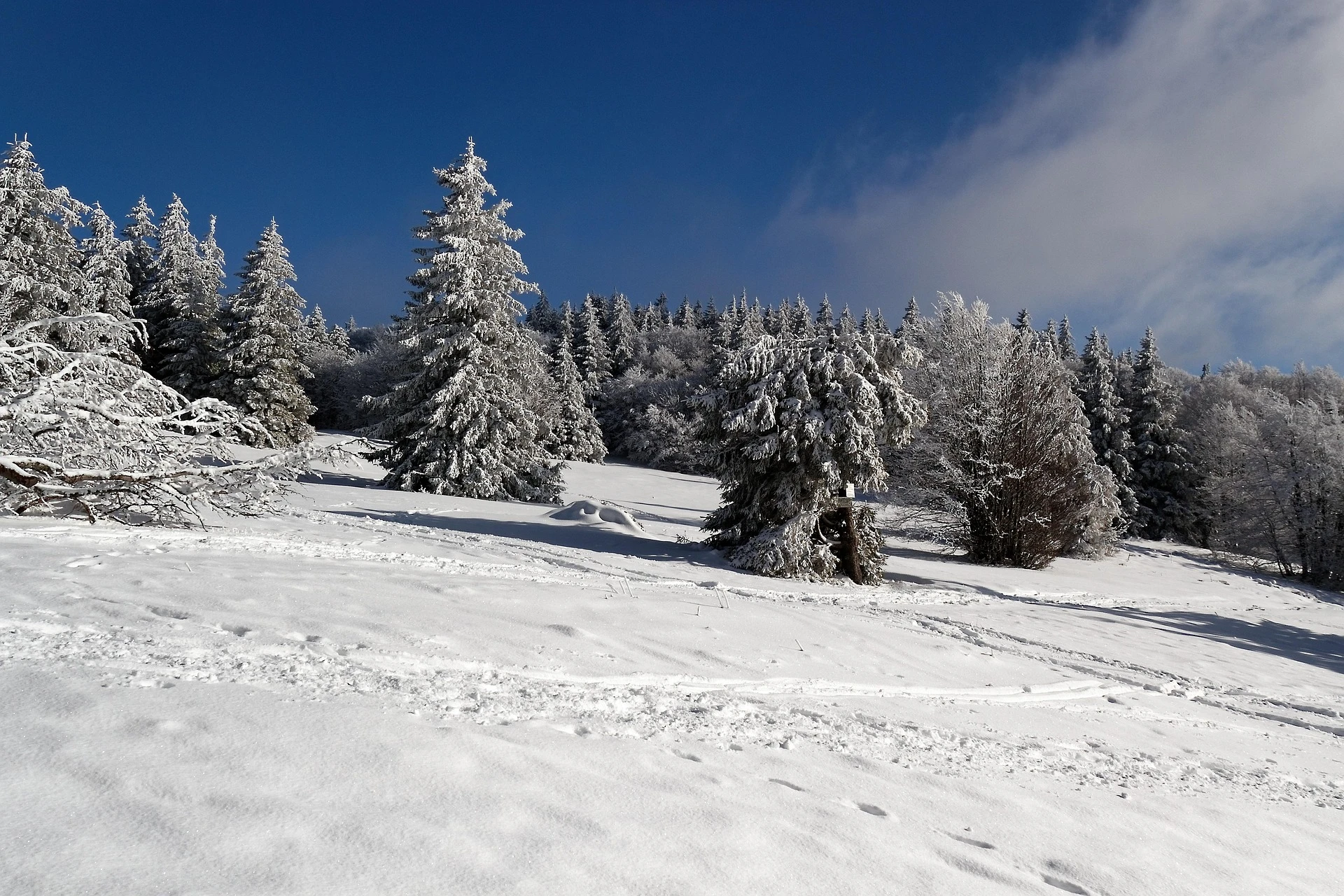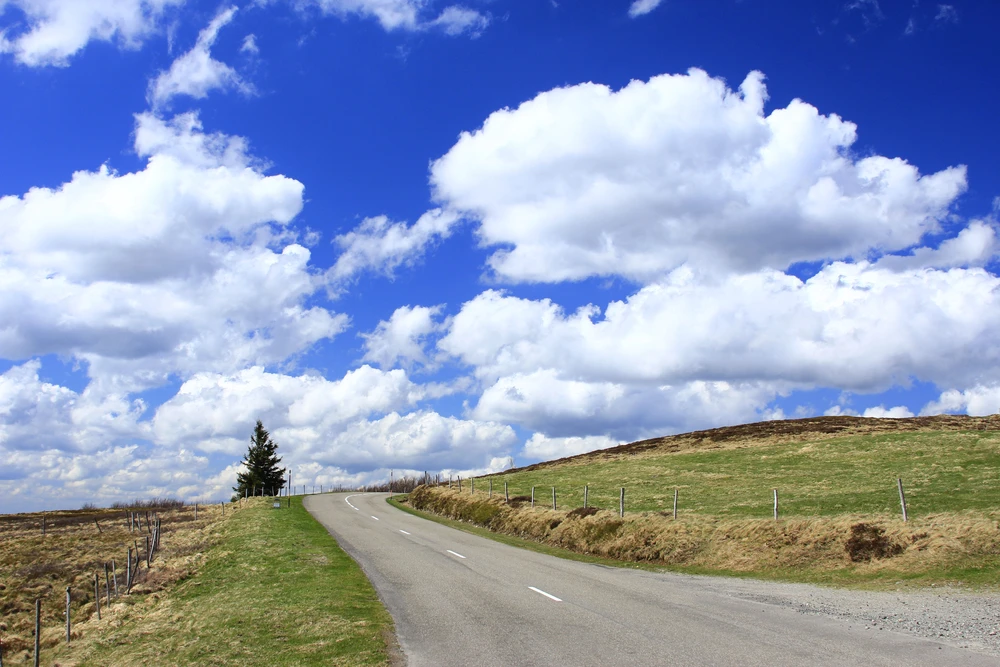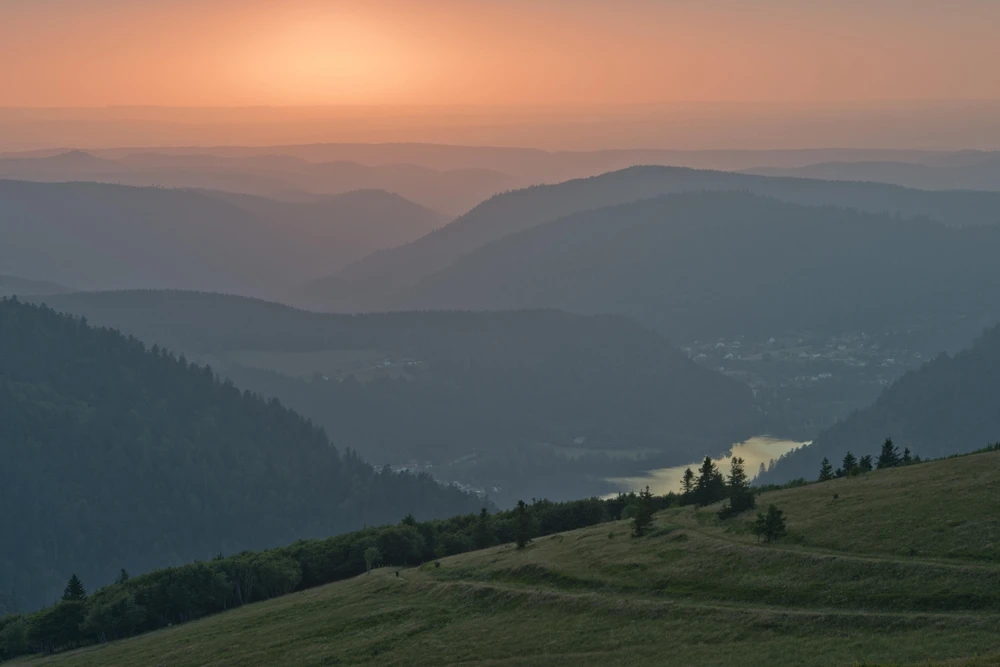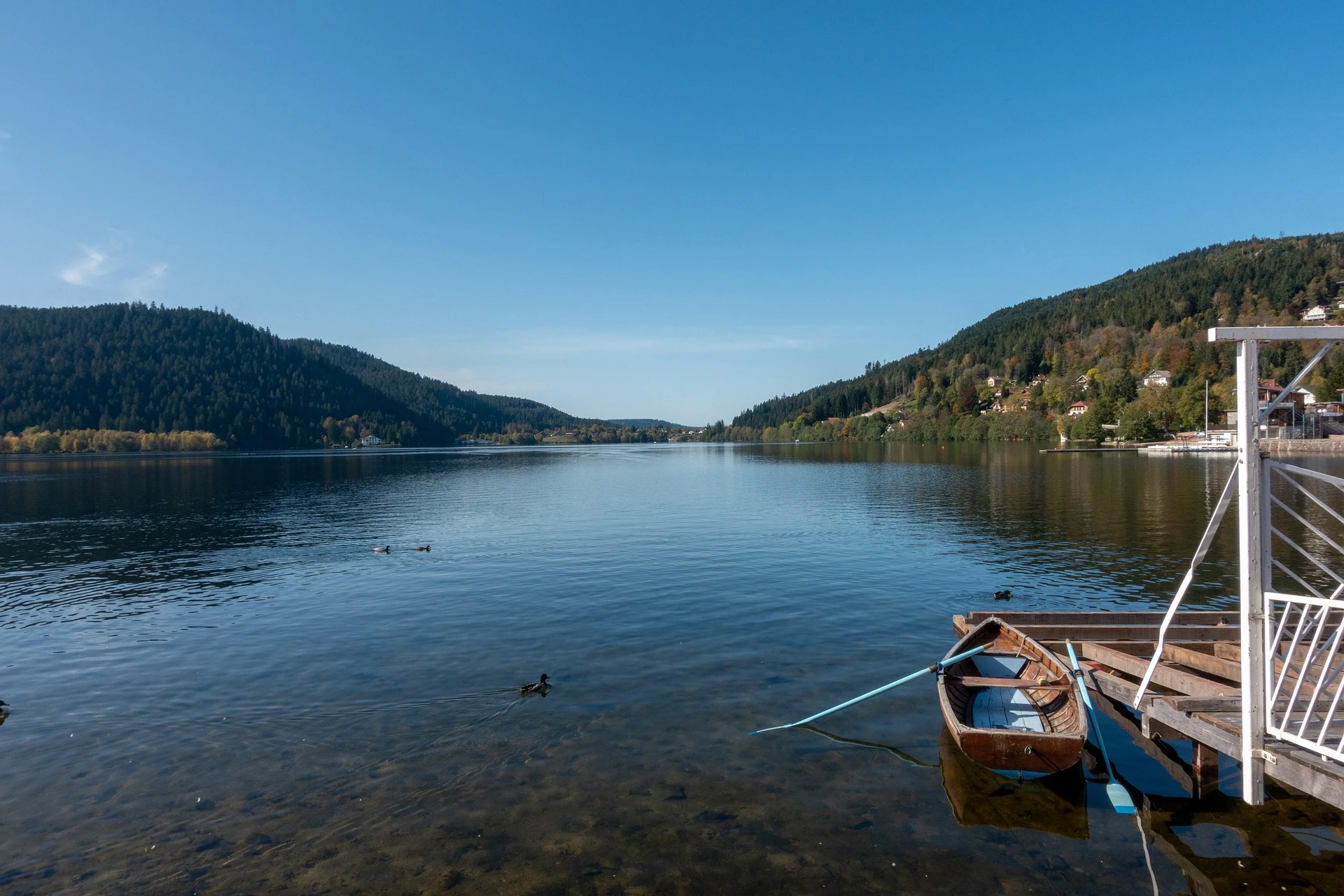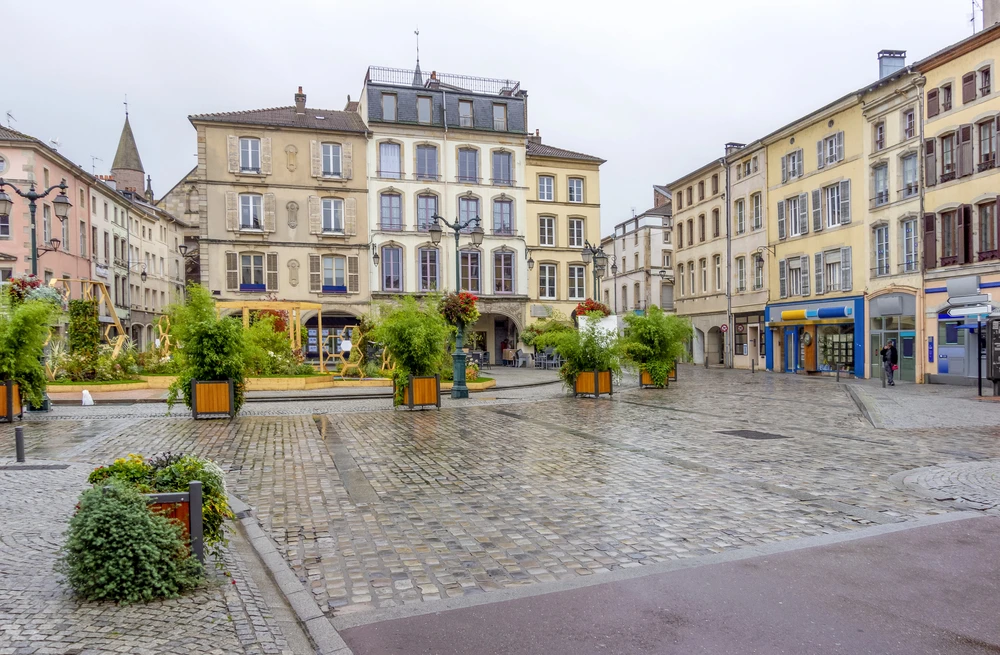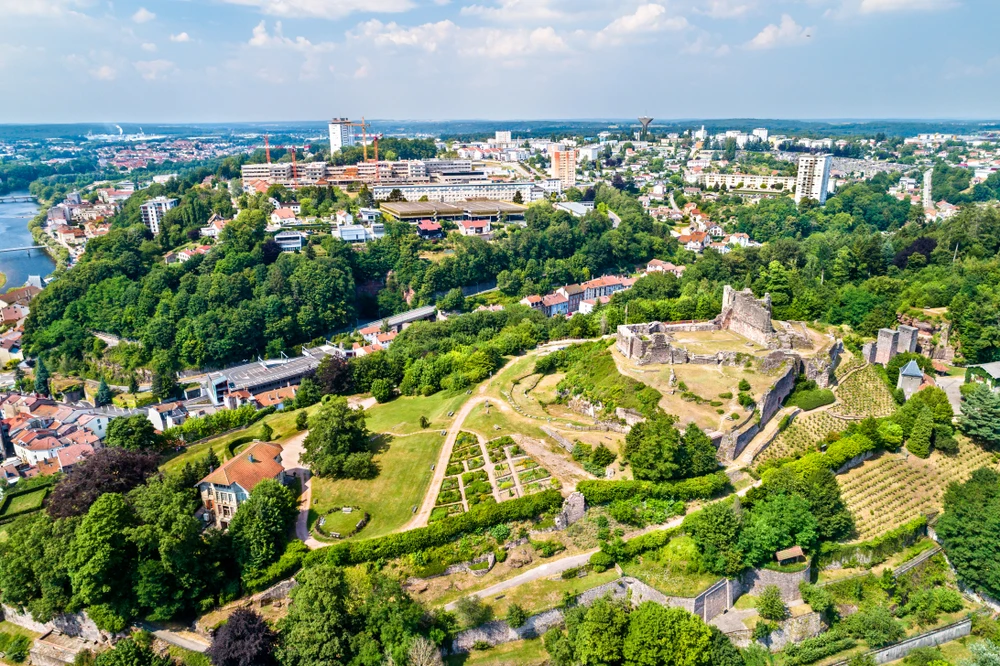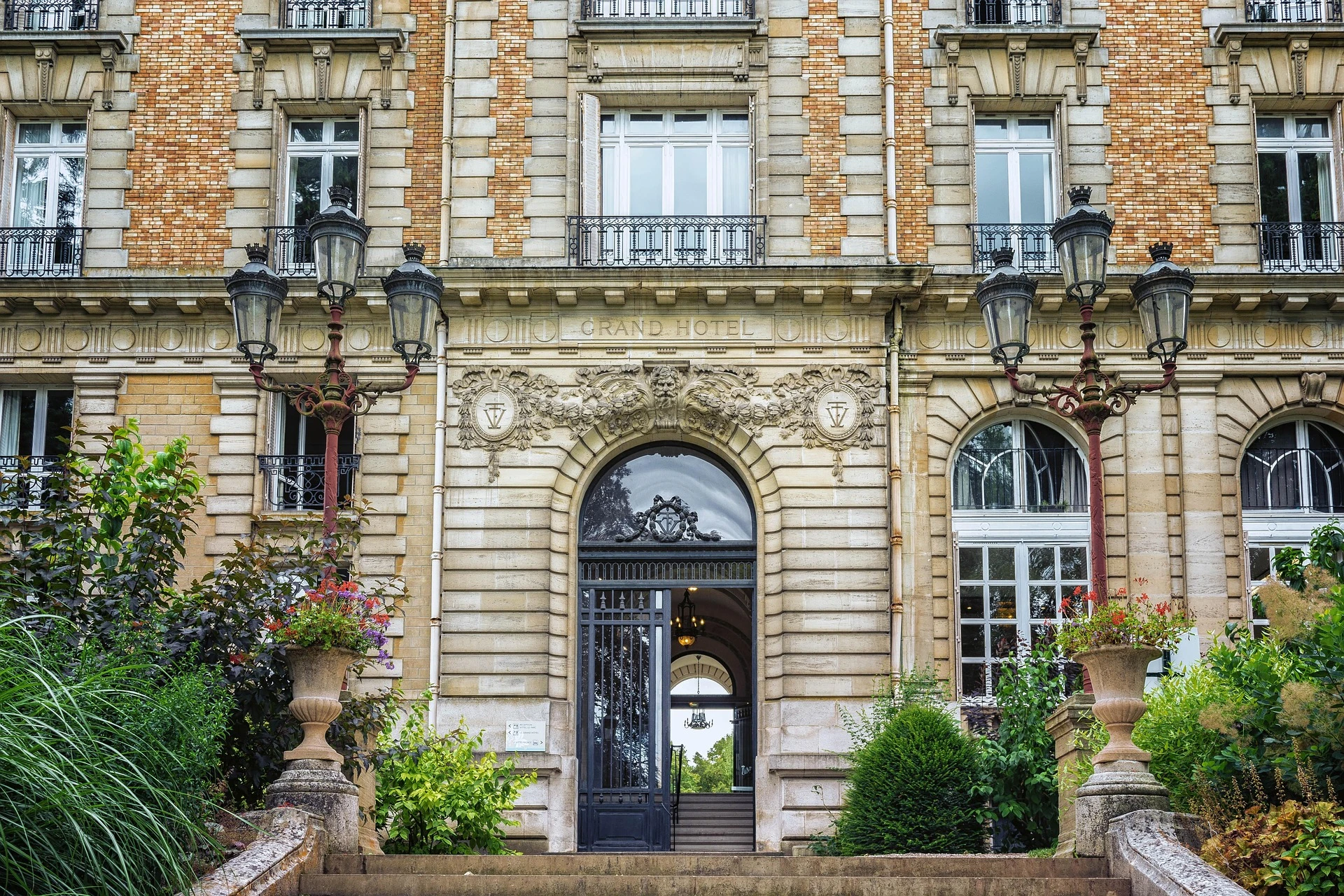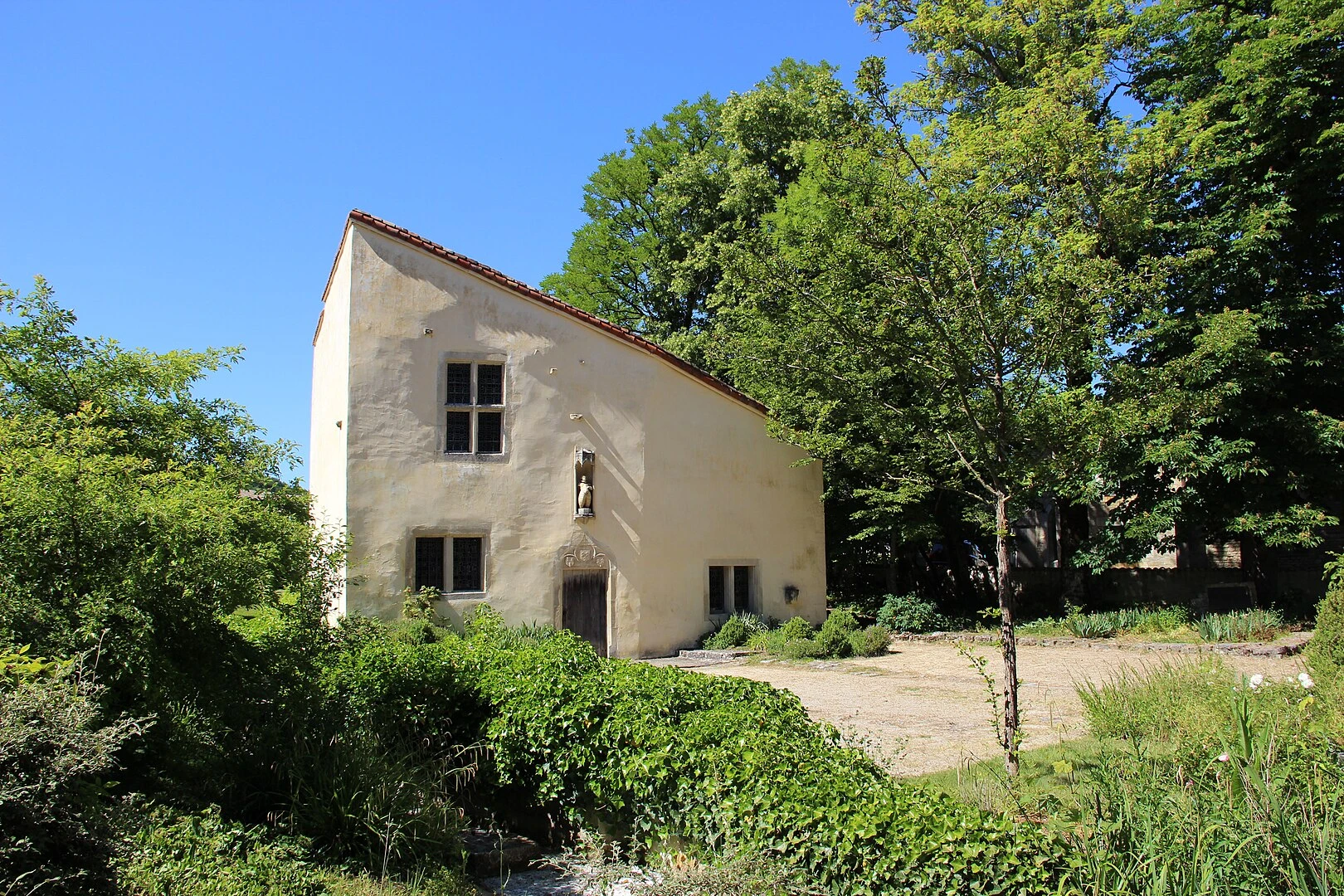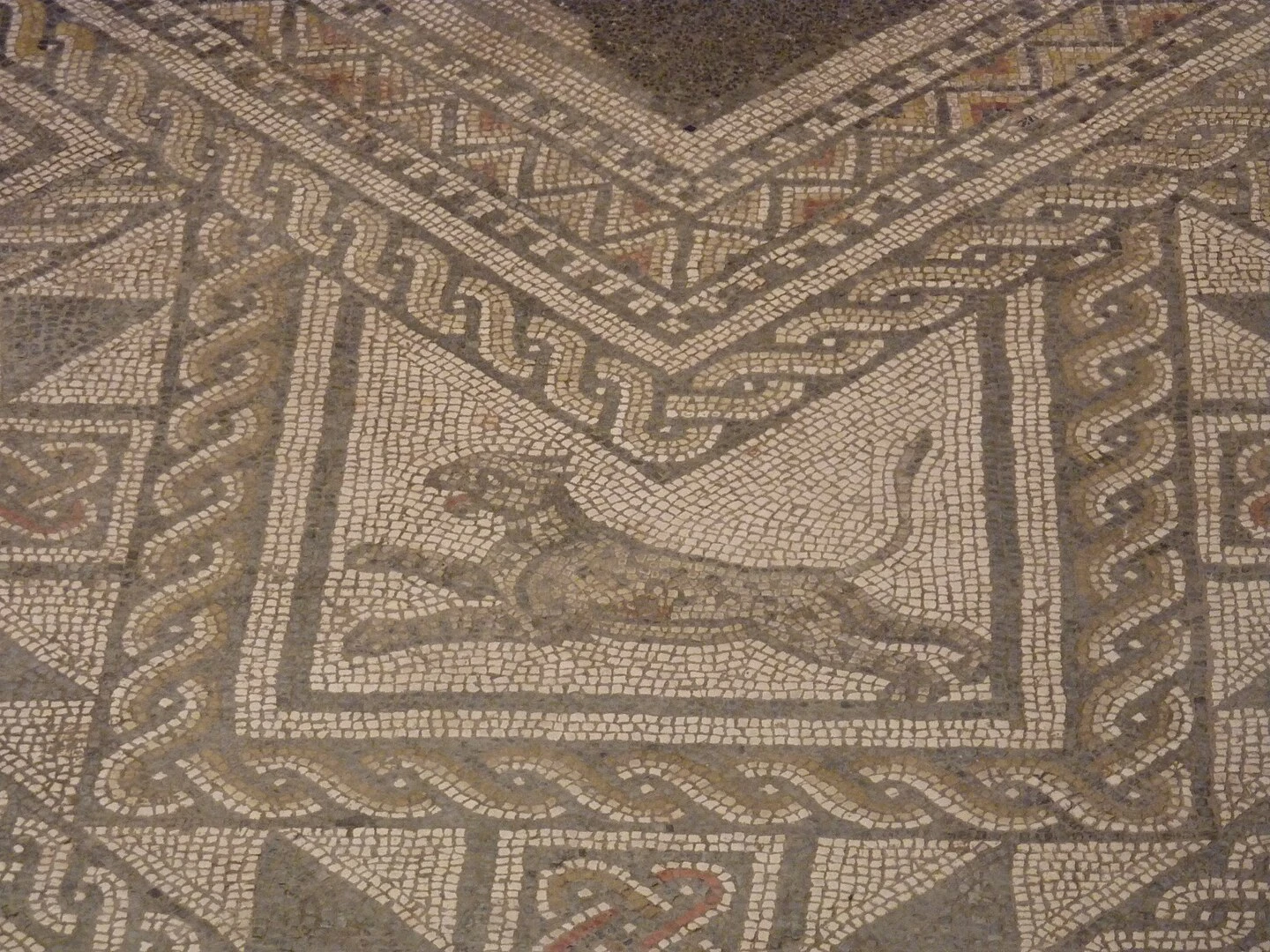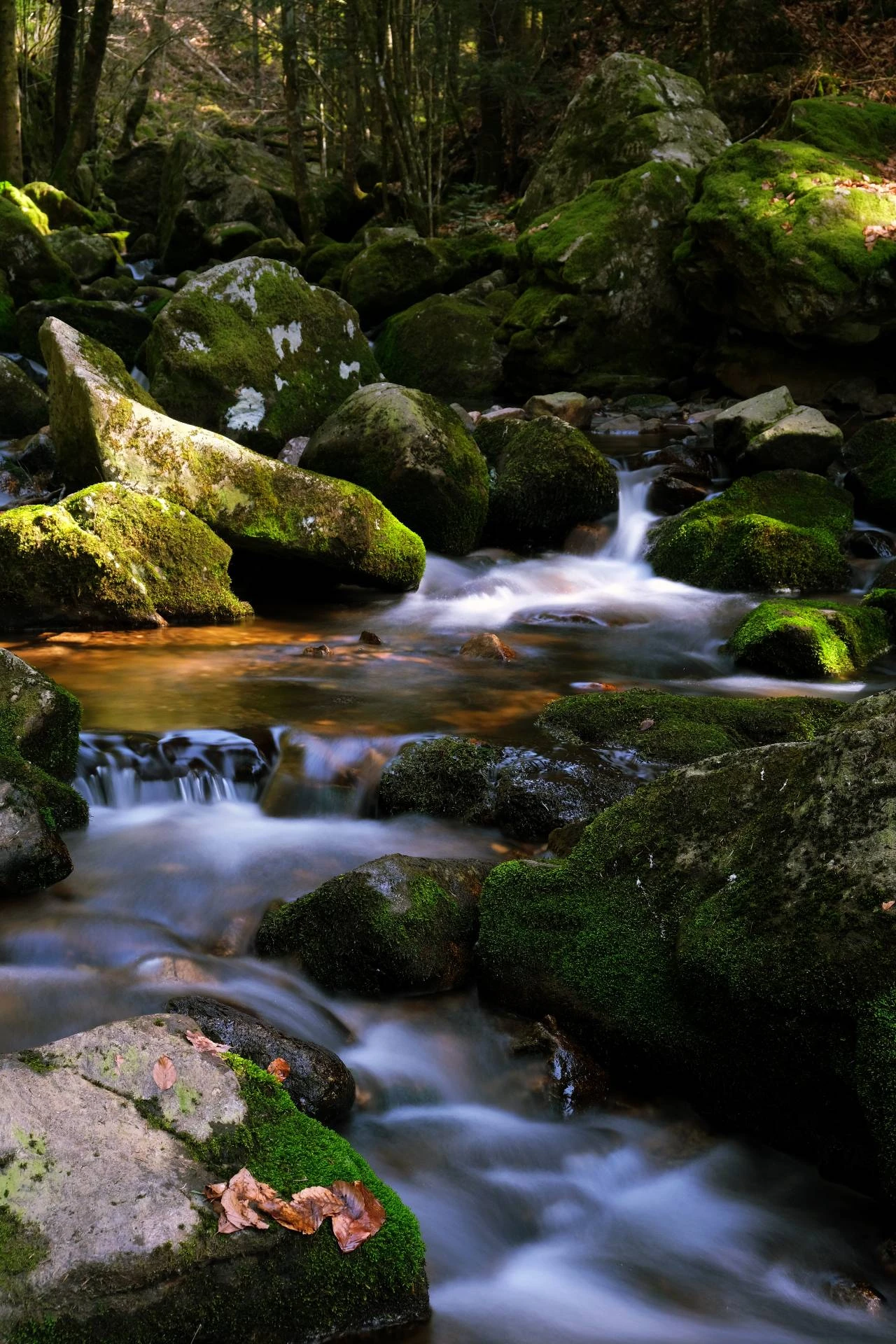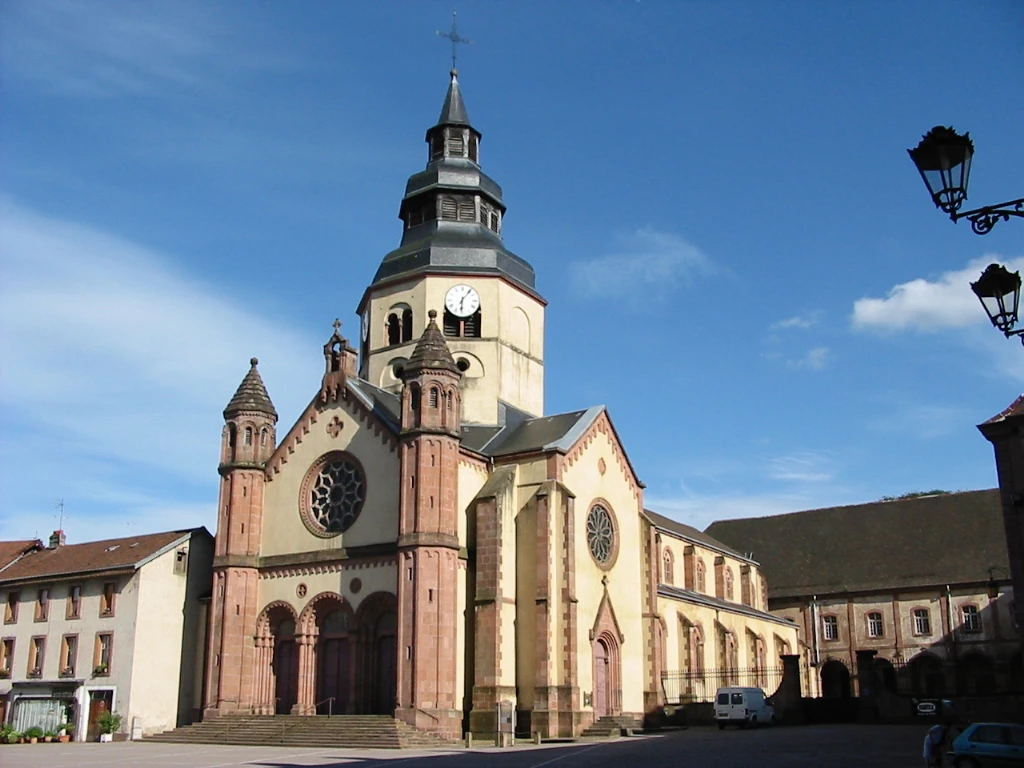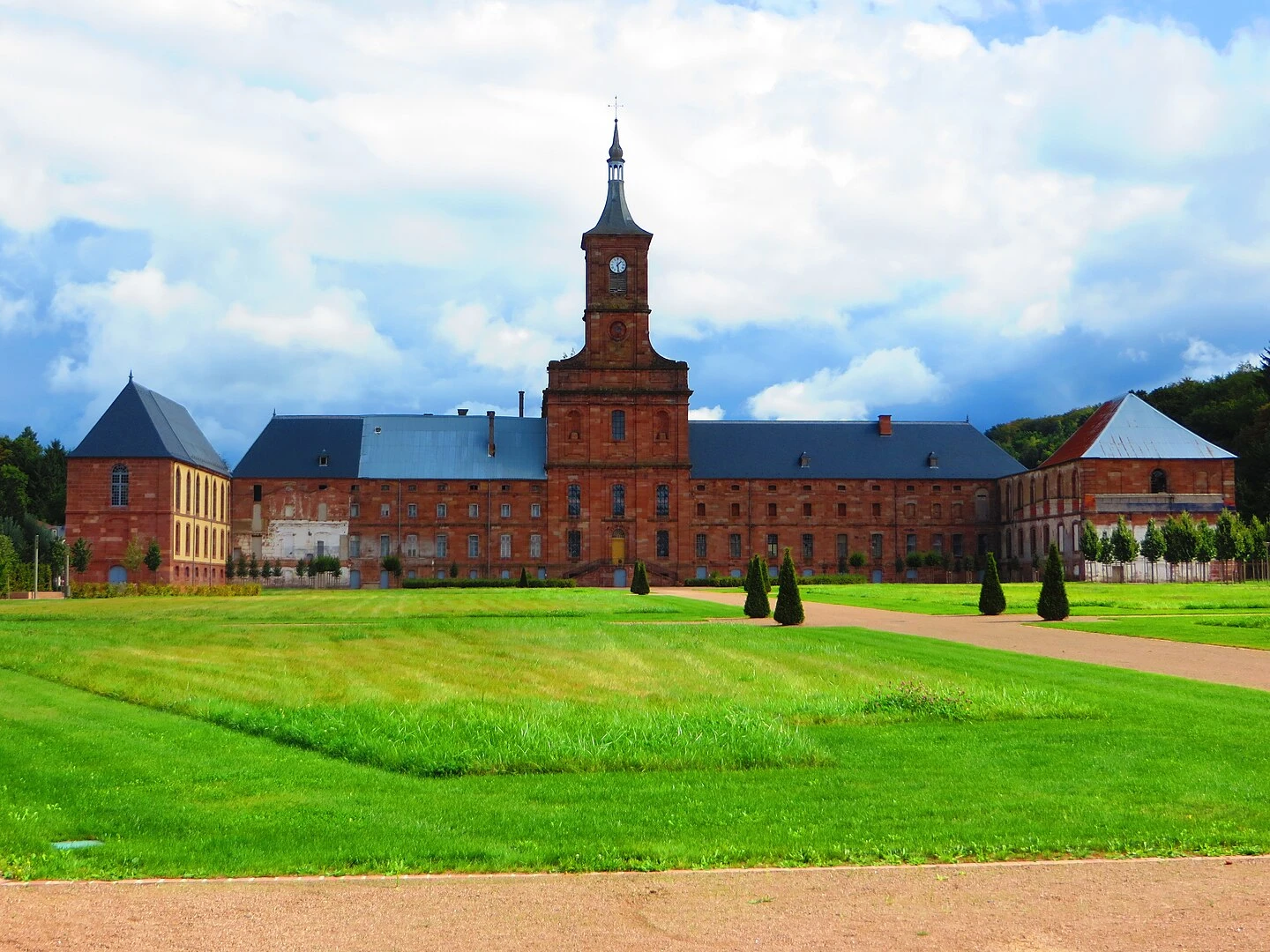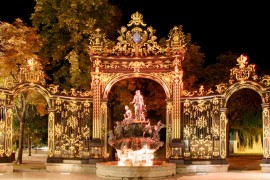1. Lac des Corbeaux, the natural jewel of La Bresse
The magnificent Lac des Corbeaux, whose name comes from curve, detour... Photo chosen by Monsieur de France: MattLphotography via depositphotos
Located above La Bresse, thisglacial lake is surrounded by coniferous forests. It's reached after a short walk from the parking lot, to discover a dark, peaceful expanse of water, the outline of which forms a pleasant family hiking loop. The changing reflections of sky and vegetation in the water lend the area a mysterious charm. Benches and explanatory panels allow you to enjoy the peace and quiet while discovering the local flora and fauna.There's also the Lac de Lispach and numerous hiking trails to explore the Vosges forest. In autumn, you can hear the stag's bellow. Winter is also an exciting season, with hiking and La Bresse is a renowned ski resort, one of the cheapest in France. Ah!"And it's obviously gourmet! You'll be able to try tofailles and blueberry tarts.
Hiking in the snow in winter at La Bresse and in the Hautes-Vosges, a real pleasure! Photo chosen by Monsieurdefrance.com: by Trevor M de Pixabay
-
Nearest train station : Remiremont train station (35 km)
2. Tendon waterfall, the highest waterfall in the Vosges
Located in the heart of a magnificent fir forest, the large Tendon waterfall impresses with its 32-meter height. A little further down is the small cascade de Tendon. Accessible by car, it can be reached in a few minutes on foot via an easy, shady path. The walk continues to the small waterfall, about 1 km downstream, forming a nature excursion perfect for families. The roar of the water, the verdant mosses, the slippery rocks give the whole a much-appreciated wild character. In winter, the frozen waterfall is a magical sight.
The great waterfall of Tendon / Photo chosen by Monsieur de France: Imladris via depositphotos
-
Nearest train station : Remiremont train station (25 km)
3. The Col de la Schlucht, lookout point and hikes in the Vosges mountains
At an altitude of 1,139 meters, the Col de la Schlucht is one of the most famous points in the Vosges. It offers panoramic views over the Alsatian and Vosges valleys, and provides a passageway between the two sides of the massif. From here set off several emblematic hikes, including the sentier des roches or the ligne des crêtes, offering landscapes of stubble, rocky ridges and deep forests. In winter, the site becomes a small paradise for snowshoeing or Nordic skiing. You'll find plenty to eat and even a small market in season;
The landscape is often snow-covered in winter, even if there's no snow a little lower down/ Photo chosen by Monsieur de France: by leon grandjean de Pixabay
-
Nearest train station: Munster station (25 km)
The Col de la Schlucht is one of the crossing points on the route des crêtes linking the Vosges peaks from Alsace to Haute-Saône / photo chosen by monsieur de France: joachimopelka via depositphotos
4. The Hohneck, emblematic peak of the Vosges massif
Le Hohneck rises to 1,363 meters and dominates the Vosges skyline. It offers a 360° view of the Vosges valleys, the Alsace plain and even the Alps on a clear day.The ascent on foot from the Schlucht or the Kastelberg is very popular with hikers. At its summit, an orientation table allows you to spot the surrounding peaks. It's a popular spot for observing chamois at dawn or dusk. In winter, the site is decked out in snow and becomes a playground for skiers and hikers.
The view from the Honneck is magnificent / Photo chosen by Monsieur de France : rimagebrokermicrosto via depositphotos
-
Nearest train station : Remiremont station (link via La Bresse)
5. Lac de Gérardmer, the natural pearl of the Vosges
The view from one of the pontoons on Lake Gérardmer / photo chosen by Monsieurdefrance.com : Jean Martinelle de Pixabay
The most beautiful and vast natural lake in the Vosges departmentis nestled in a setting of mountains and forests. Gérardmer attracts many visitors every year in search of relaxation and outdoor activities. The lake is ideal for swimming, pedal-boat rides, canoe outings or simply a peaceful stroll along its landscaped path. The 6 km-long tour of the lake offers changing panoramas according to the season: golden forest in autumn, glistening snow in winter or blossoming flowers in spring. Nearby, the town of Gérardmer offers hotels, restaurants and entertainment. It's made for tourism and well-being, and is one of the cheapest ski resorts in France. It's also a foodie's paradise, with a host of culinary specialities based on munster-géromé - the valley cheese - and bacon. The Gérardmer tourist office is the oldest in France;
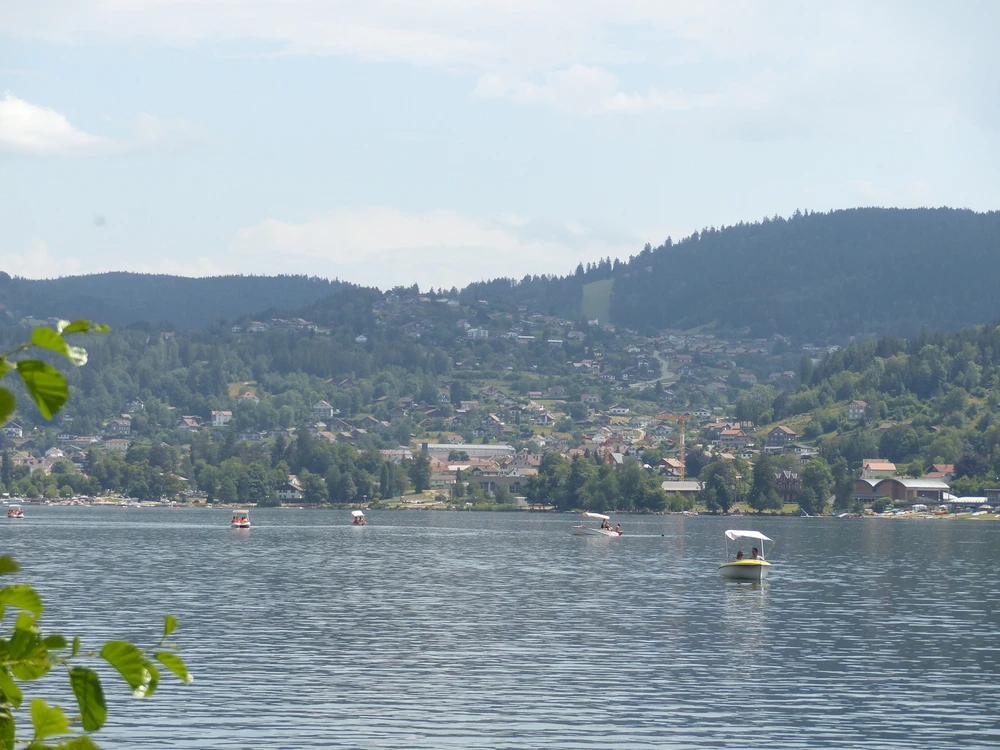
Lake Gérardmer/ Photo chosen by Monsieur de France: dimitri.croquet via depositphotos
-
Nearest train station : Remiremont train station (with bus to Gérardmer)
6. Épinal, historic center and Saint-Maurice basilica
Epinal and its heart: the Place des Vosges/ Photo chosen by Monsieur de France : prill via depositphotos
Capital of the Vosges region, Épinal captivates visitors with its rich cultural and architectural heritage. In addition to the famous Imagerie d'Épinal, a veritable institution since the 18th century, and to which the Musée de l'image pays tribute, you can admire the Place des Vosges lined with elegant arcades, the Maison Romaine and its stunning rose garden, the ruins of the old castle that dominates the town and the Basilica Saint-Maurice, a Vosges masterpiece in pink sandstone, whose roots are 1,000 years old. Listed as a historic monument, it features stained glass windows, a Romanesque bell tower and remarkable liturgical furnishings. The departmental museum retraces the history of the Vosges. Crossed by the Moselle and the canal, which offers exciting cycling routes, Épinal is surrounded by forests.
-
Nearest train station: Gare d'Épinal (downtown)
The old castle in Epinal / Photo chosen by monsieurdefrance.com shutterstock
7. Vittel, a spa and spa town not to be missed
Vittel is one of France's most renowned spa resorts / photo chosen by Monsieur de France: shutterstock.
Renowned worldwide for its mineral water, Vittel is an elegant spa nested in the western Vosges. In addition to the Thermes and their wellness treatments, the town offers a 220-hectare spa park riddled with pretty little pavilions, covered galleries, a casino, a listed racecourse and Belle Époque villas. It's worth noting that Charles Garnier, the architect of the Paris Opera, designed the layout of the spa town and some of the houses. If you like Art-Deco, the station is well worth a visit. The spa has welcomed prestigious guests, and today remains a soothing place for curists and tourists alike. It's also a sporting destination thanks to its golf course and health trails. Not far away, Contrexéville is well worth a visit, as it's also a spa town, with its thermal baths, villas and lacs de folies, great fun to discover in summer.
Typical: the Grand Hotel de Vittel/ Photo chosen by Monsieurdefrance.Com: by Peter H from Pixabay
-
Nearest train station : Vittel train station (downtown)
8. Joan of Arc's birthplace at Domrémy-la-Pucelle
It was here, in the Vosges, that Joan of Arc was born / Photo chosen by Monsieur de France : sedmak via depositphotos
It was in this peaceful village on the banks of the Meuse that Joan of Arc was born in 1412. She was baptized in the church, which is still there. Her home, carefully preserved, can be visited all year round. It houses objects and documents tracing his childhood. Nearby, the Centre Johannique allows visitors to discover his epic and his impact on French history. The Basilica of Bois-Chênu, built in the 19th century, dominates the site and attracts pilgrims and the curious. A moving visit in the footsteps of an extraordinary figure. A little further afield, the town of Neufchâteau is very beautiful with numerous town houses, and you can also go to Grand, a village of 350 inhabitants built where there was a Gallo-Roman town of 15,000 inhabitants called Andesina.There remains an impressive amphitheaterand in particular a very large mosaic that is 2,000 years old and shows strikingly realistic animals.
Jeanne d'Arc's birthplace / Photo chosen by Monsieur de France : By Ketounette - Own work, CC BY-SA 4.0, https://commons.wikimedia.org/w/index.php?curid=90911591
-
Nearest train station : Neufchâteau station (14 km)
The amazing mosaic of Grand / Photo chosen by Monsieur de France: By Pethrus - Own work, CC BY-SA 4.0, https://commons.wikimedia.org/w/index.php?curid=19245452
9. Plombières-les-Bains, a historic spa town in the Vosges mountains
Les Thermes de Plombières / Photo chosen by Monsieur de France : By Thermesplb - Self-published work by Thermesplb, CC BY-SA 2.5, https://commons.wikimedia.org/w/index.php?curid=1650889
Nestled in the hollow of the Augronne valley, Plombières-les-Bains is a spa town of incomparable charm. In fact, it's the oldest spa town in France. A popular spa town fromthe 17th century (Madame de Sévigné, Madame de Maintenon...) to the 18th (Voltaire, Beaumarchais) and especially the 19th century, particularly by Napoleon III, who came here often. Incidentally, he signed the Treaty of Plombières here in 1851, the prelude to the birth of Italy. The "town of 1000 balconies" has preserved its period architecture and sumptuous thermal baths. Its picturesque lanes, hanging gardens and houses with balconies (they say there are 1000 of them!) offer a relaxing setting, between mountains and heritage. Today, the "Calodaé" thermal center offers Roman baths in a decor inspired by Antiquity, part of which is Gallo-Roman and still in operation.The thermal park is superb, the facade of the thermal baths was made by Bartholdi, the man who made the Statue of Liberty and an amazing miniature park offers you the chance to see the monuments of the Grand-Est in small. You can take some very funny photos and all around Plombières, the Val d'Ajol, the landscapes are magnificent. Ithere's also the Val d'Ajol, an unmissable gourmet stopover for lovers of good meat, since it offers the andouille du Val d'Ajol, unique in the world, one of France's 4 andouilles, deliciously smoked.
-
Nearest train station : Remiremont station (25 km)
The Géhard stream in Girmont Val d'Ajol/ ©Remiremont Plombières Tourist Office.
10. Senones, a little-known treasure of Vosges heritage
The church of Senones / Photo chosen by Monsieur de France: CC BY-SA 2.5, https://commons.wikimedia.org/w/index.php?curid=856632
Too often forgotten, Senones nevertheless deserves a stopover. Former capital of the principality of Salm, independent until 1793, this small town is home to a vast Benedictine abbey whose buildings impress with their scale. You can admire the Saint-Gondelbert abbey church, the cloister, the conventual buildings and the former abbey palace. The town also preserves 18th century houses and traces of its industrial past. An amazing place, between culture, heritage and nature. Not far away, the abbey of Moyenmoutier and its superb pink facade. Finally Saint Dié des Vosges is well worth a detour. Completely rebuilt after its destruction in 1944 by the Nazis, it offers typical 50s architecture. The city is also where America was named, making it the geography capital of the world.
The astonishing Moyenmoutier Abbey / Photo chosen by monsieur de France: By Aimelaime - Own work, CC BY-SA 4.0, https://commons.wikimedia.org/w/index.php?curid=51620924
-
Nearest train station : Saint-Dié-des-Vosges train station (25 km)

